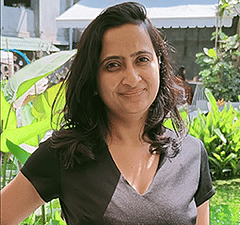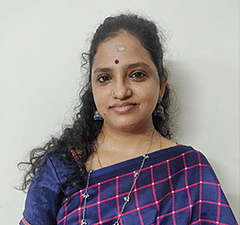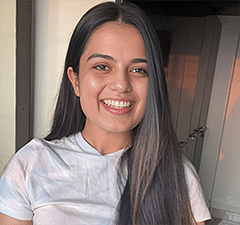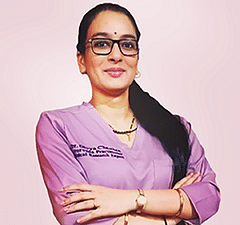Fundamentals of Generic Medicine
Last updated on : 05 Mar, 2024
Read time : 6 min
Pharmaceutical companies prepare formulae for various innovative medicines and send them for approval to the FDA before their launch in the market. The approval is for the dosage, as well as the safety, effectiveness, labelling, and packaging of the product. Only after the FDA has verified these characteristics will the manufacturing company be allowed to exclusively market their brand name medicine that is protected by a patent, which typically lasts for approximately twenty years from the time of their discovery. These are known as branded medicines. In addition, brand-name medications have a higher price tag than their generic counterparts due to the significant sums of money spent on clinical tests conducted on animals or humans, as well as on advertising and marketing for the branded medicine. When the patent period of the branded medicine is about to get over, manufacturers apply to the FDA to sell the generic version of these branded medicines, also known as Generic medicine.
What are Generic Medicines?
According to the Food and Drug Administration (FDA), a generic medicine is the same as a brand-name drug that is currently available on the market. The branded medicine and its generic counterpart both come in the same dosage form, are safe to use, have the same amount of active ingredients, and are administered in the same way. In order to keep the same high level of quality as branded medications, the stringent “Good manufacturing practises” established by the FDA are adhered to. These days, consumers can choose from a wide variety of generic pharmaceuticals that are sold in stores. Their cheaper prices, which are within most consumers’ price ranges, are directly contributing to the ever-increasing rate of their sales. Pharmaceuticals that are therapeutically identical to an original drug that is no longer protected by a patent are referred to as generic medicines. The bioequivalent of a branded medicine is referred to as a generic medicine.
What are the requirements of generic medicines?
When a customer fills a prescription at a pharmacy and receives a generic version of the medication, FDA approval ensures that the generic version functions in the same manner as the original brand-name medication.
The evaluation of both brand-name and generic pharmaceuticals by the FDA is held to stringent criteria with regard to safety, efficacy, and quality.
In order to be approved for use by the FDA, a generic version of a brand-name medication must be both pharmaceutically equivalent and bioequivalent to the original brand-name medicine. Certain variations, such as those in size, form, storage requirements, and minor labelling (or package insert) variations, are allowed. For two pharmaceuticals to be considered pharmaceutically equivalent, they must have identical quantities of their active ingredient, as well as the same dose, mode of administration, and conditions of use. In order for a generic drug to be considered bioequivalent, there must be no discernible difference in the rate and degree of absorption achieved by the drug and its corresponding brand-name equivalent.
Why do we need generic medicines?
The Drug Price Competition and Patent Term Restoration Act, often known as the Hatch-Waxman Act, was approved by the 98th US Congress on September 24, 1984, encouraging the pharmaceutical industry to make generic pharmaceuticals and establishing the current US generic drug regulatory framework.
Pharmaceutical companies need to file an abbreviated new drug application (ANDA) to regulators to market generic drugs. Since their branded versions are studied and approved for safety and efficacy, the ANDA procedure does not require the manufacturer to repeat animal testing of generics, which is time-consuming. Generic medicines are created after the innovator’s patent and exclusive rights expire. In developing nations, generic medicine approval does not require bioequivalence (BE) studies, and the US is the gold standard for generic drug regulation. Generic medicines are much cheaper than brand-name medicines because their makers don’t have to pay for making a new medicine from scratch and don’t have to spend as much on advertising.
India has one of the largest per capita out-of-pocket expenses, such generics will save a significant amount of money that may be used for other health issues.
Since brand-name drugs are too expensive for the average person to afford, the need for generic drugs arises. Large populations do not have access to life-saving medications due to the high cost of medicines. In addition, the number of fatal diseases has increased over the past year, and the price of the medications used to treat them is extremely high. Here, generic medications play a significant role.
How safe are generic drugs?
Generic drugs are considered to be bioequivalent to their branded counterparts since they contain the same active ingredient and are of the same quality, potency, and effectiveness as their branded counterparts. The FDA also requires generic drug manufacturers to follow the same strict “Good Manufacturing Practices” rules.
Do generic medicines require clinical trials?
By following a strict review and approval process, the FDA makes sure that patients can get safe, effective, and affordable generic medicines. Through this process, the FDA requires a generic-drug company to show that it can make a drug that can be used in place of its brand-name counterpart. It is very important for pharmacists to know how generic drugs get approved so that they can answer questions or concerns from patients.
The Drug Price Competition and Patent Term Restoration Act of 1984, also called the Hatch-Waxman Act, made bioequivalence the standard for approving generic copies of drug products. With these changes, the FDA can approve requests to sell generic versions of brand-name drugs without having to do expensive and redundant clinical trials to prove the drugs are safe and effective. The Abbreviated New Drug Application (ANDA) was made by Hatch-Waxman for generic drugs. Brand-name drugs have to go through expensive and time-consuming research and development programmes, such as clinical studies, to show that they are safe and work well. Generic drug applications are called “Abbreviated” because they usually don’t have to include both animal and human data to show that the drug is safe and effective. Instead, applicants for generic drugs must show scientifically that their drug works the same way as the brand-name drug.
Conclusion:
We have hopefully been able to shed some light on the topic of generic pharmaceuticals through the use of this post. Generic medications offer a number of benefits, the most important of which is their contribution to increased competitiveness in the pharmaceutical sector. They are required for nations with lower incomes to ensure that everyone has access to medications at prices they can afford and that the healthcare system is direct and transparent.
Furthermore, Generic Medicine is not only available at pharmacies but they are also available online. We at Truemeds provide an online pharmacy that offers home delivery of a vast selection of prescription and over-the-counter pharmaceutical products, as well as other consumer healthcare items and teleconsultations. Truemeds being India’s most reputable and reliable online generic pharmacy platform, we offer maximum savings of up to 72% off on your order.
Disclaimer
Our healthcare experts have carefully reviewed and compiled the information presented here to ensure accuracy and trustworthiness. It is important to note that this information serves as a general overview of the topic and is for informational purposes only. It is not intended to diagnose, prevent, or cure any health problem. This page does not establish a doctor-patient relationship, nor does it replace the advice or consultation of a registered medical practitioner. We recommend seeking guidance from your registered medical practitioner for any questions or concerns regarding your medical condition.
Popular Articles
Recommended Articles
Recent Articles
Top-Selling Medicines:
...View more
Top-Selling OTC:
...View more
Subscribe
Claim your complimentary health and fitness tips subscription and stay updated on our newest promotions.
Download Truemeds
Manage your health with ease Download Truemeds today!Get easy access to medicine refills, health information, and more. With our app, you'll never have to wait in line again. Download now and start taking control of your health.

Contact Us
Our customer representative team is available 7 days a week from 9 am - 9 pm.
v3.5.0
Our Payment Partners




























































